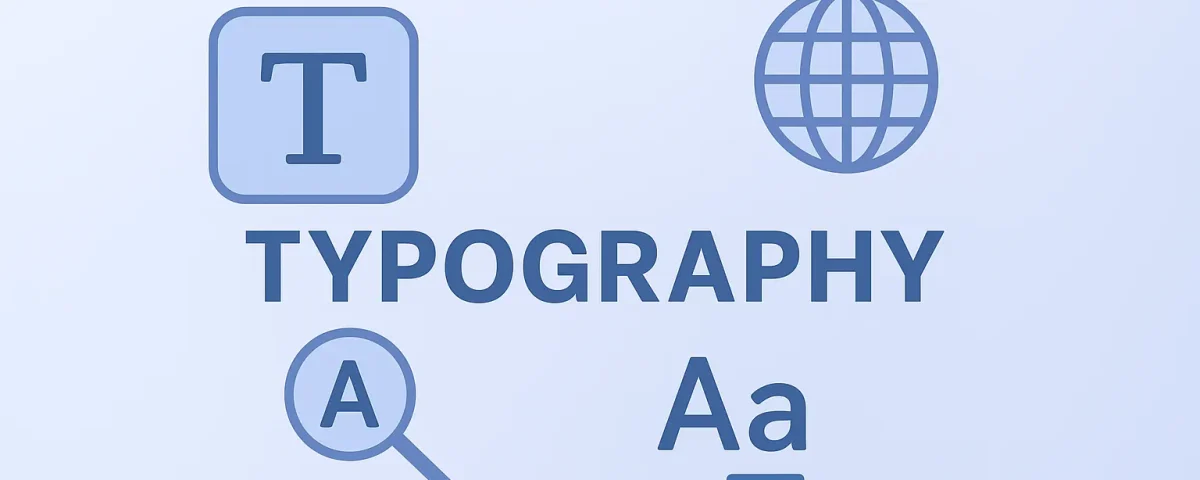In web design, typography is more than just picking a good-looking font. It’s a crucial part of your brand identity, readability, and overall user experience. When used thoughtfully, typography can guide your visitors, improve engagement, and even strengthen your SEO performance.
1. Why Typography is More Than Design
Typography influences how users perceive your brand. The right combination of font style, size, and spacing creates a consistent visual experience that builds trust. A poorly chosen font, on the other hand, can make your website look unprofessional and hard to read.
Every element — from headings to call-to-action buttons — should reflect your brand’s tone. For instance:
Sans-serif fonts like Open Sans or Roboto feel clean and modern.
Serif fonts like Merriweather or Georgia create a more traditional, authoritative feel.
2. Readability and User Experience
When visitors land on your website, they decide within seconds whether to stay or leave. Typography plays a big role in that decision.
Here are some best practices:
Font size: Keep body text between 16px–18px for readability.
Line height: Use 1.5x the font size to make paragraphs easier to scan.
Contrast: Make sure text stands out against the background without straining the eyes.
Hierarchy: Use consistent heading sizes (H1, H2, H3) to guide readers smoothly.
A clean, readable font layout helps reduce bounce rates — a signal that search engines interpret as positive engagement.
3. Typography and SEO Connection
While typography itself doesn’t directly affect search rankings, it influences user behavior, which in turn affects SEO.
Here’s how:
Improved dwell time: Readable content keeps visitors on your site longer.
Reduced bounce rate: Visitors don’t leave immediately when content is clear and pleasant to read.
Mobile optimization: Fonts that adapt well across devices improve mobile SEO performance.
So, in essence, typography indirectly boosts SEO by enhancing user satisfaction — a key ranking factor.
4. Website Speed and Font Performance
Many designers forget that fonts can impact loading speed. Using too many external font files or heavy styles slows down your website — which can hurt both SEO and user experience.
Optimization tips:
Limit to 2–3 font families maximum.
Use system fonts where possible.
Host fonts locally or use font-display: swap to avoid invisible text.
Compress and preload key font files.
A fast, well-optimized site with clean typography creates a smoother user journey and performs better in search rankings.
5. Accessibility and Global Readability
Typography must be inclusive. Choose fonts that support multiple languages and are easy for all users to read — including those with visual impairments.
Accessible design improves usability and aligns your brand with modern UX standards — something both users and Google value highly.
6. How SingleWebSolution Can Help
At SingleWebSolution, we understand that great typography is more than design — it’s strategy.
If your website suffers from:
Poor readability
Slow page loading due to font issues
Inconsistent text styles
Low engagement or high bounce rates
…our expert web designers can analyze, optimize, and redesign your website for both aesthetics and performance.
We blend modern typography principles, SEO optimization, and UX-focused layouts to create websites that look stunning — and perform even better.
👉 Learn more about our Web Design Services
7. Key Takeaways
Good typography enhances readability and keeps visitors engaged.
Fonts affect loading speed, bounce rate, and user perception.
SEO benefits indirectly through improved user signals.
Choose fonts wisely, keep them lightweight, and maintain consistency across your site.
A professional web design partner like SingleWebSolution ensures your typography supports both branding and performance goals.

